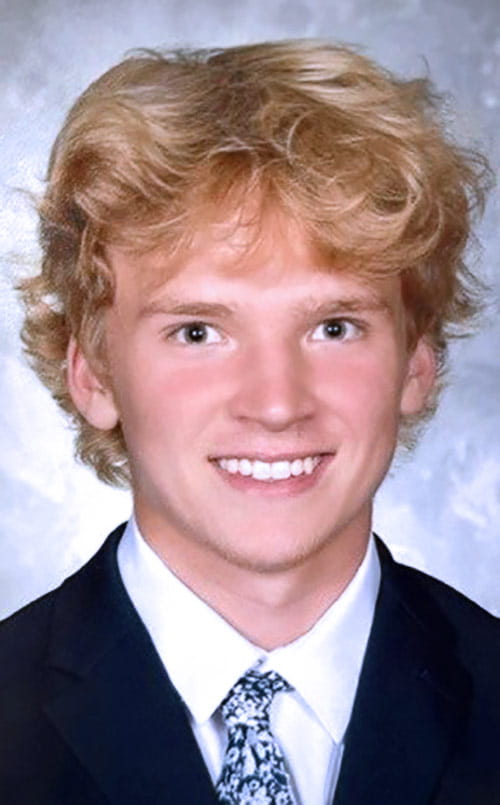UH Athletic Trainer Identifies Rare Condition in Teen Hockey Player
June 01, 2022
 University Hospitals Rainbow Babies & Children'sExperts in Children's Health
University Hospitals Rainbow Babies & Children'sExperts in Children's Health

When 17-year-old Kallen Zarembski noticed his swollen arm, he assumed it was a forgotten hockey injury. A senior at St. Ignatius High School, and a four-year starter for his hockey team, he’s had his share of painful collisions on the ice. What he didn’t realize is – what caused the swelling could have killed him. A rare condition called Paget Schroetter Syndrome that develops when an upper rib restricts blood flow, resulting in a blood clot dangerously close to the lungs, heart and brain. It can be more common in athletes who lift their arms for their sport – and it’s Kallen’s sport that very likely saved his life.

If not for the urging of his University Hospitals Athletic Trainer who works every day at St Ignatius, Kallen’s teenaged bravado would have put him back on the ice.
“We had a showcase that week – four games – and I just wanted to play. It didn’t hurt much and I wasn’t too worried,” said Kallen. But his athletic trainers were.
“Kallen had tried resting, medication, and some directed therapy, nothing worked, and that just kept raising red flags. By Sunday, we were concerned enough to get him in right away even though he had already had an ultrasound at another facility and was told it was negative. We contacted Dr. Flannery, our team physician, on a Sunday and Kallen was seen early the next morning and sent to the ER all within three hours. It really defines how the sports medicine team works so well at Saint Ignatius. Sometimes we are the gatekeepers once the initial injury occurs,” said Maureen Sizemore, UH Athletic Trainer, St. Ignatius High School.

“Luckily, in sports medicine, we very rarely deal with life and death. However, when you encounter one of those life-threatening issues, you have to catch it. Even before I saw him that morning, I told my trainee that, if the entire arm is swollen, we have to rule out Paget Schroetter Syndrome. The MRI showed a clot basically from the base of the neck to the middle of his arm. The great part about working at University Hospitals is the collaborative environment, the availability of world class physicians in every aspect of medicine, and ability to get things done quickly. Within 36 hours of stepping foot in my office, we had confirmed the clot with a MRI, developed a treatment plan, and had him on medicine to help stabilize the clot. I’d hate to think what might have happened if it wasn’t for his athletic trainer’s persistence in getting him the care that she felt he needed.”
It was an unexpected path to a diagnosis and two lifesaving surgeries.
“When a young healthy individual has an upper extremity clot, we often need to consider thoracic outlet syndrome as the culprit. In fact, he had an abnormal fibrous band that was compressing the vein like a vise. We were able to relieve this compression which will prevent long term problems.“ said the Vascular Surgeon for University Hospitals.
Kallen’s mom says had it not been for the AT’s concern, they may have put off seeking care.

“I’m grateful to the team for all they’ve done. They even fit him in for follow-up early to see if he could play one last time as a senior. It didn’t work out, and I know that’s hard on him, but I’m just happy he’s alive,” said his mom, Kerry Duncan.
Kallen is now about to graduate high school. He is still on blood thinners, but he looks forward to living his best life as a freshman at Miami University in the fall. “It was scary at first, especially driving to see Dr. Kashyap after the diagnosis. But he was so confident and made me feel much better as soon as I met him. My advice to others? Don’t be stubborn. Listen to the people who are smarter than you.”


